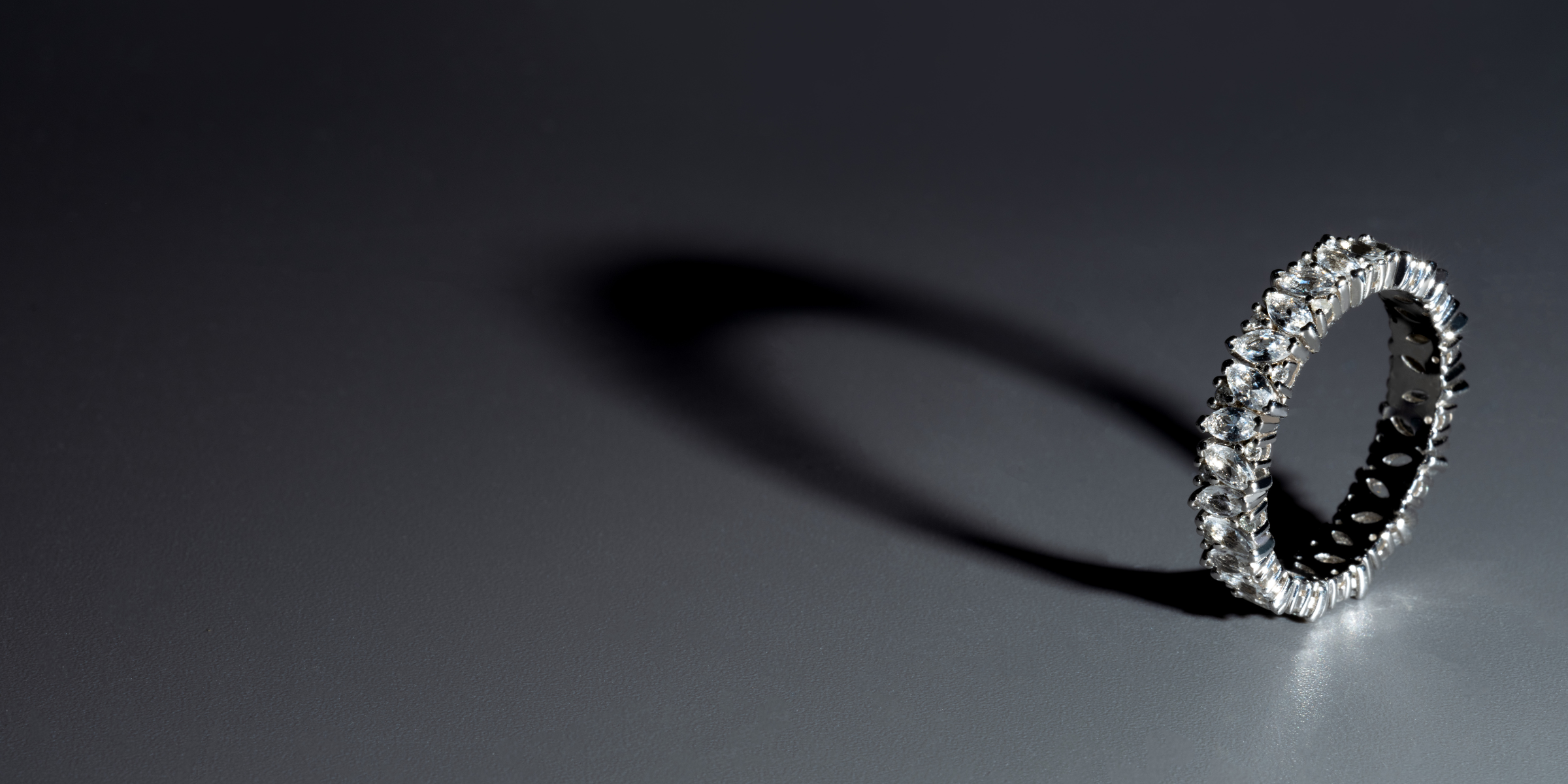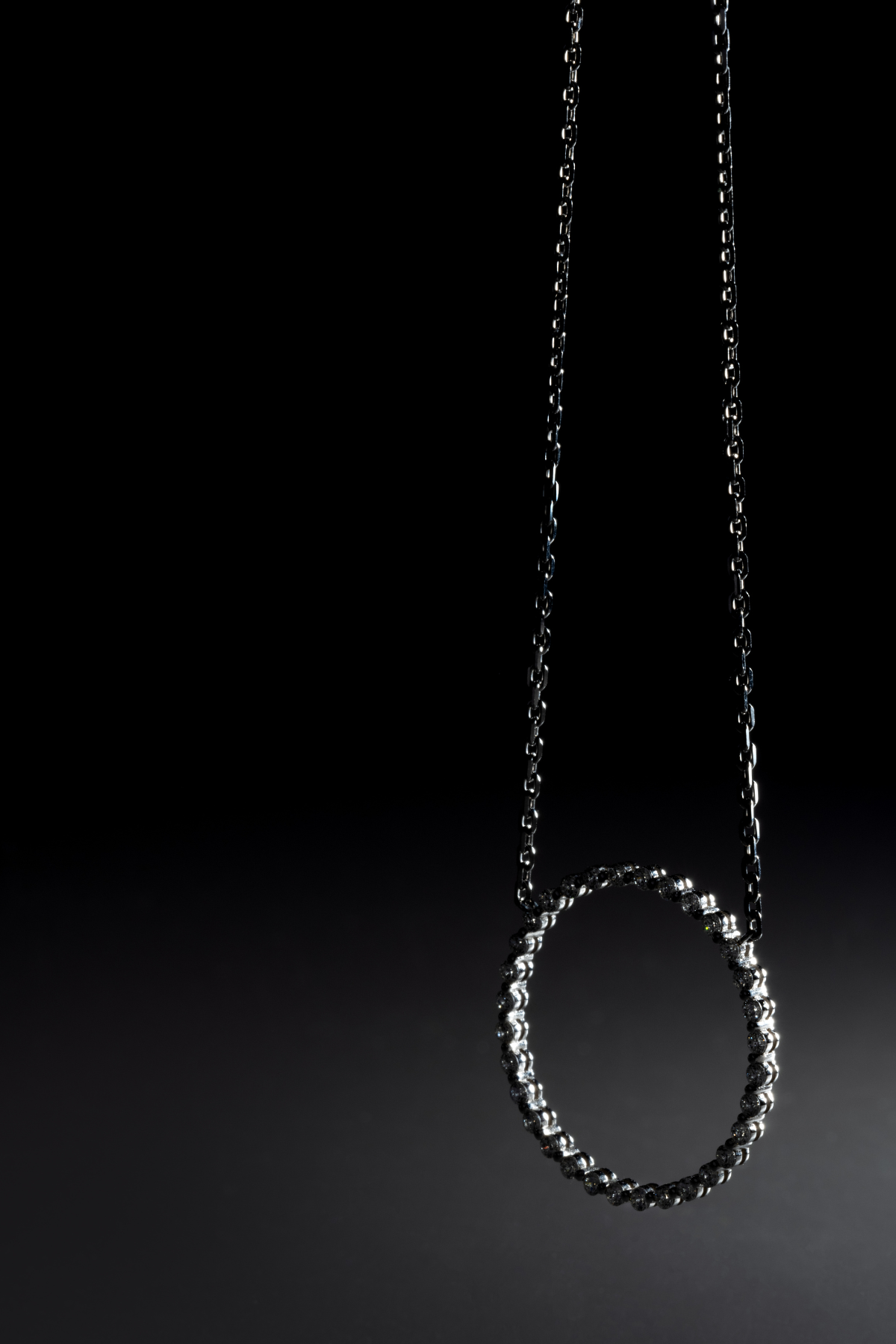LAB DIAMONDS AND DIAMOND FAQ
Q: Is it cheaper to get a lab diamond instead of a mined one?
A: Yes, it is cheaper to get a lab diamond because we don't involve a middleman in the process.
Q: Are the stones certified in the same way as mined diamonds?
A: Yes, our lab diamonds are certified by organisations like GIA and IGI, using the same certification standards as mined diamonds.
Q: Are the 4Cs (Cut, Colour, Clarity, and Carat) graded the same way for lab diamonds as for mined ones?
A: Yes, the 4Cs for lab diamonds are graded using the same chart as for mined diamonds. You can learn more about the 4Cs.
Q: Can you tell the difference between a mined and a lab diamond?
A: No, even gemologists cannot distinguish between mined and lab diamonds, as there is no visual difference between them.
Q: How are lab diamonds grown?
A: Lab diamonds are grown using the same process as those that form underground. We apply immense heat and pressure to carbon, and diamonds start forming.
Q: How are lab diamonds more sustainable than mined ones?
A: Lab diamonds are more sustainable because they eliminate the need for mining, which can displace animals and land. Additionally, lab diamonds can now be grown using 100% renewable energy sources.
Q: What is diamond clarity?
A: Diamond clarity refers to the presence of internal and external imperfections, known as inclusions and blemishes, within a diamond. These characteristics can affect the diamond's transparency and overall visual appearance.
Q: What are inclusions in diamonds?
A: Inclusions are internal imperfections or tiny natural features within a diamond, such as minerals, crystals, or tiny fractures. These can impact a diamond's clarity and may be visible under magnification.
Q: What are blemishes in diamonds?
A: Blemishes are external flaws or irregularities on a diamond's surface, which can include scratches, chips, or polishing marks. They can affect a diamond's clarity and are typically visible without magnification.
Q: How is diamond clarity graded?
A: Diamond clarity is graded using a scale that ranges from "Flawless" (no imperfections visible under 10x magnification) to "Included" (imperfections visible to the naked eye). The most commonly used grading system is the GIA (Gemological Institute of America) clarity scale.
Q: What is the impact of diamond clarity on a diamond's value and appearance?
A: Diamond clarity can significantly affect a diamond's value and appearance. Diamonds with higher clarity grades (fewer imperfections) are more valuable and typically appear clearer and more brilliant to the naked eye.
Q: Are flawless diamonds common?
A: Flawless diamonds are extremely rare, and very few diamonds receive this top clarity grade. Most diamonds have some level of imperfections, but the presence and visibility of these imperfections can vary.
Q: How do I choose the right diamond clarity for my needs and budget?
A: The choice of diamond clarity depends on your budget and personal preferences. If you're looking for a balance between quality and cost, consider diamonds in the "Very, Very Slightly Included" (VVS) or "Slightly Included" (SI) clarity categories, as these typically offer a good balance of value and appearance.
Q: What is diamond colour?
A: Diamond colour refers to the presence or absence of colour within a diamond. It is graded on a scale from "D" (colourless) to "Z" (light yellow or brown).
Q: How does the absence of colour affect a diamond's value and appearance?
A: Diamonds with less colour are typically more valuable and appear whiter or more colourless. Colourless diamonds, graded "D" or "E," are highly sought after for their pure, brilliant appearance.
Q: What are the different colour grades for diamonds?
A: The Gemological Institute of America (GIA) colour grading scale ranges from "D" (colourless) to "Z" (light yellow or brown). Diamonds in the "D" to "F" range are considered colourless, while those in the "G" to "J" range are near-colourless.
Q: How is diamond colour assessed and graded?
A: Trained gemologists evaluate diamond colour by comparing the diamond to a set of master stones with known colours under controlled lighting conditions. The diamond is then assigned a colour grade based on how closely it matches the master stones.
Q: Are there diamonds with natural colours other than yellow or brown?
A: Yes, some diamonds exhibit natural colours such as blue, pink, or green. These fancy colour diamonds are evaluated differently and are highly prized for their unique hues.
Q: What is the most common colour for diamonds?
A: The most common colour for diamonds used in jewellery is in the near-colourless range, typically in the "G" to "J" range. These diamonds offer a good balance between value and appearance.
Q: Can the average person distinguish between diamond colour grades with the naked eye?
A: Distinguishing between colour grades with the naked eye can be challenging, especially in diamonds with near-colourless grades. The colour differences are often subtle, and individual perception may vary.
Q: How do I choose the right diamond colour for my needs and budget?
A: The choice of diamond colour depends on your budget and personal preferences. If you prefer a colourless appearance, consider diamonds in the "D" to "F" range. For those who prioritize value, diamonds in the "G" to "J" range offer an excellent balance of quality and affordability.
Q: What is a diamond's carat weight?
A: A diamond's carat weight refers to its measurement of mass or size. One carat is equivalent to 200 milligrams or 0.007 ounces. In simpler terms, it indicates how large the diamond is.
Q: Does carat weight affect a diamond's size and appearance?
A: Yes, the carat weight directly affects a diamond's size and, to some extent, its visual appearance. Generally, as carat weight increases, so does the size and perceived value of the diamond.
Q: Are diamonds of the same carat weight always the same size?
A: Not necessarily. Two diamonds with the same carat weight can appear different in size if their proportions and cut differ. Factors like depth, table size, and girdle thickness influence the diamond's actual size.
Q: Is a higher carat weight always better when choosing a diamond?
A: The choice of carat weight depends on personal preference and budget. While larger diamonds are often considered more valuable, it's essential to balance carat weight with other factors like cut, clarity, and colour to find the right diamond for your needs.
Q: What is the average carat weight for an engagement ring diamond?
A: The average carat weight for an engagement ring diamond varies depending on location and personal preferences. In the United States, the average carat weight is around 1 carat. However, there's a wide range of carat weights chosen for engagement rings, from smaller diamonds to over 2 carats or more.
Q: Does carat weight affect the price of a diamond?
A: Yes, carat weight has a significant impact on a diamond's price. Larger diamonds are generally more expensive, and the price can increase exponentially with carat weight, especially for rare and exceptionally large diamonds.
Q: What are "magic sizes" in terms of carat weight?
A: Magic sizes are carat weights that are just below the next full carat. For example, a 0.99-carat diamond might be referred to as a "magic size" because it's just under 1 carat. These diamonds can offer cost savings while appearing nearly as large as their full-carat counterparts.
Q: What factors should I consider when choosing the right carat weight for a diamond?
A: When choosing a diamond, consider your budget, personal style, and the recipient's preferences. Balance carat weight with other factors like cut, colour, and clarity to find a diamond that suits your needs and delivers the desired visual impact.
Q: Can a diamond with a lower carat weight still look stunning?
A: Absolutely. A well-cut diamond with excellent proportions can maximize its brilliance and sparkle, making it visually stunning regardless of its carat weight. The right balance of the "Four Cs" is key to choosing a beautiful diamond.
Q: Are there popular carat weights for specific diamond shapes?
A: Yes, certain diamond shapes have popular carat weights. For example, round brilliant diamonds are often found in carat weights like 1, 1.5, or 2 carats. Other shapes may have unique preferred carat weights based on their dimensions and proportions.


